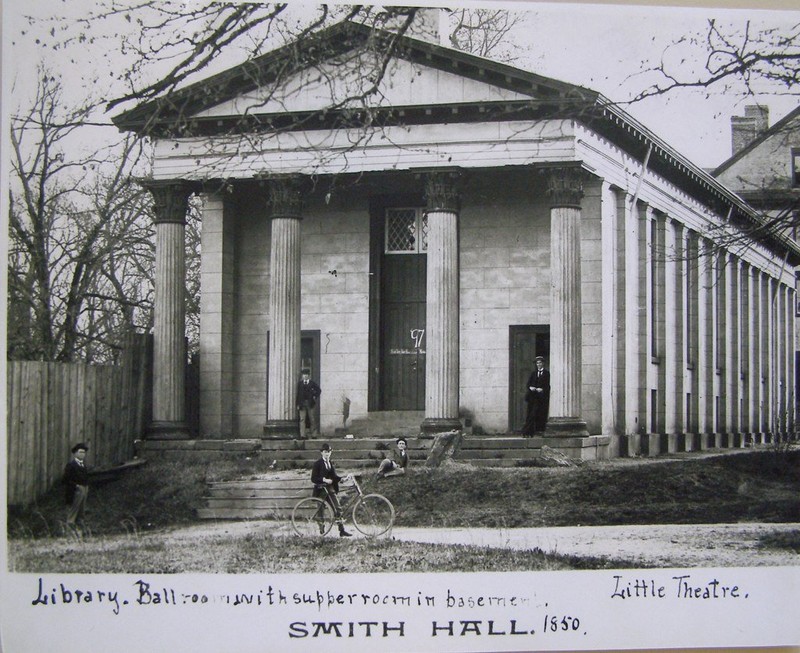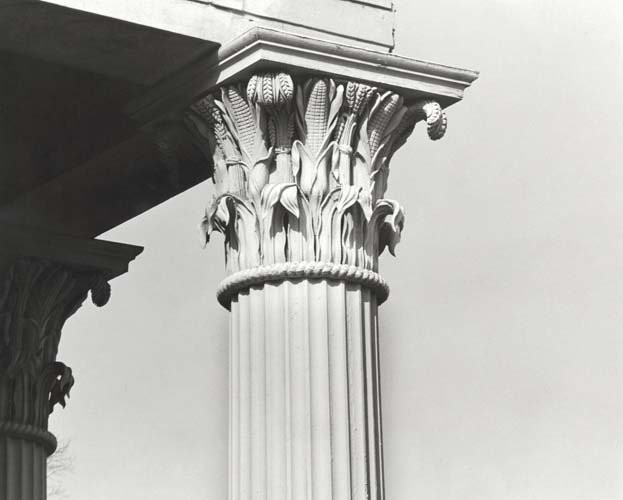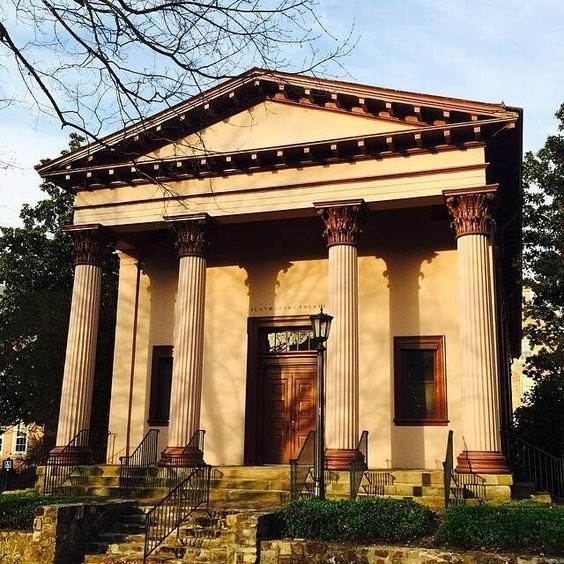Historic Playmakers Theater
Introduction
Text-to-speech Audio
Images
The Playmakers Theater, originally named Smith Hall, in 1850.

The detail on the columns on the facade of the Playmakers Theater.

The Playmakers Theater today.

Backstory and Context
Text-to-speech Audio
On March 4, 1850, Alexander Davis, an architect from Philadelphia, Pennsylvania, wrote a letter to the University of North Carolina President David Swain with the idea to build the then Smith Hall differently than any other building on campus. Davis’ idea was to build the Playmakers Theater in the style of Greek Revival, which is inspired by the Greek Athenian temples. The theater was the only building on the University of North Carolina at Chapel Hill’s campus that wasn’t built in the American style structure.
The Playmakers Theater being originally named Smith Hall was initially named after Benjamin Smith. Smith was a Revolutionary war veteran. Smith was also the largest slave owner in North Carolina that was recorded in the nineteenth century. The Smith Hall was remodeled into the Playmakers Theater in 1925 after it was under the Carolina Playmakers control, who were founded by University of North Carolina professor Fredrick Koch in 1924. The Playmakers Theater was where the Department of Dramatic Arts studied. After the Department of Dramatic Arts outgrew the performance space, it became the campus’ main stage for performances.
The Playmakers Theater was designated as a National Historic Landmark in 1974. The theater suffered from extreme wear and tear from years of use and was closed from 2006 to 2010. In 2010, the Office of the Provost and Office of Executive Director of Arts obtained funding to restore the theater. No other renovations are planned currently for the theater. The theater is still used for indoor performances.
Sources
2. Playmakers Theater. The Carolina Story. Accessed September 25, 2018. https://museum.unc.edu/exhibits/show/architecture/playmakers-theatre--formerly-s.
3. Smith Hall (Playmakers Theatre). Documenting the American South. Accessed September 24, 2018. https://docsouth.unc.edu/global/getBio.html?type=place&id=name0001053&name=Smith%20Hall%20(Playmakers%20Theatre).
4. Names in Brick and Stone: Histories from UNC's Built Landscape. UNC History. Accessed September 25, 2018. http://unchistory.web.unc.edu/building-narratives/playmakers/.
5. UNC History, UNC History, http://unchistory.web.unc.edu/files/2017/04/pmt.jpg.
6. UNC History, UNC History,http://unchistory.web.unc.edu/files/2017/04/Playmakers-theater-1.jpg.
7. Cotten, Jerry. "Column of Smith Hall (Playmakers Theatre)." Documenting the American South, Collection P004, North Carolina Collection Photographic Archives, https://docsouth.unc.edu/unc/display_images/column.html.
